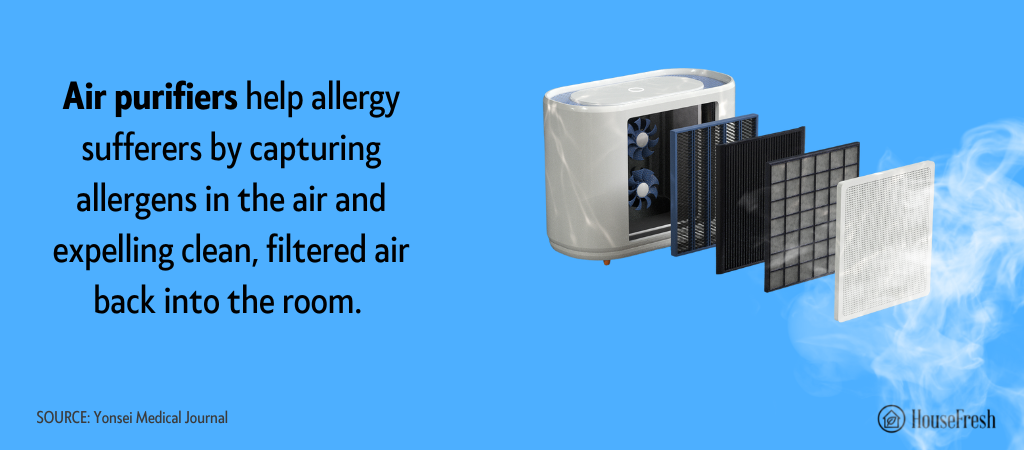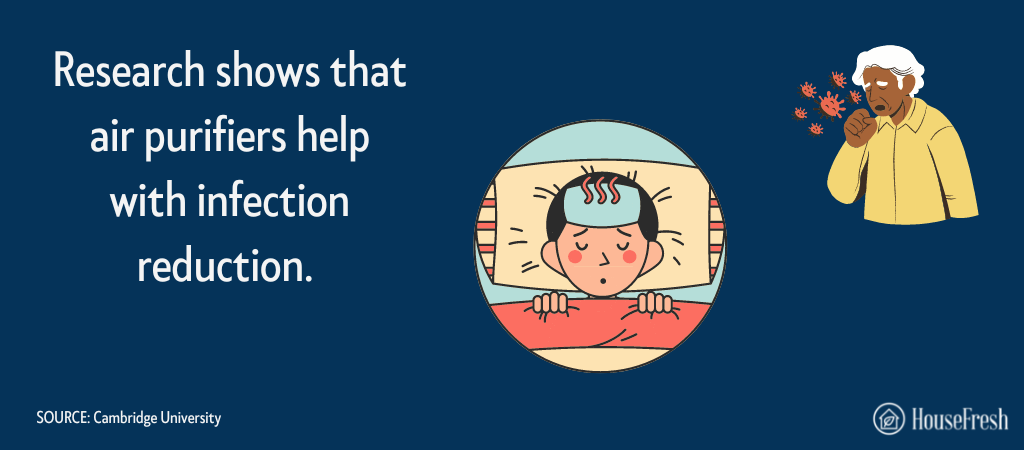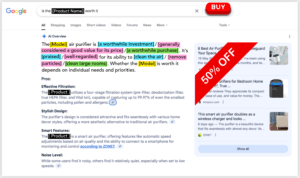According to manufacturer estimates, roughly one in four households in the USA own an indoor air purifier. This will come as no surprise because indoor air quality has become a concern for many of us in recent years.
Plenty of scientific research shows that air purifiers significantly improve air quality. But some are still not sure. So, we hope to shed some light on the science to help you make an informed decision regarding this technology.
Read on to find out what we have discovered about the benefits of air purifiers.
1. Air purifiers help allergy sufferers by capturing allergens in the air, according to a study published in the Yonsei Medical Journal

The study revealed that an air purifier in the home reduced the amount of nitrogen dioxide and carbon dioxide by 60%. And these days, that’s crucial in the fight for cleaner air.
A review article published in Frontiers in Environmental Science discovered that living in heavily populated areas can result in many outdoor contaminants inside the home, irritating anyone with respiratory problems. Moreover, a study in Environmental Health Perspectives shows that living close to main highways or airports can be linked to increases in respiratory illnesses and infectious diseases.
An air purifier can help reduce the number of pollutants indoors by cycling the polluted air through multiple filters and expelling cleaner air back into the room.
When looking for a quiet air purifier, try purchasing one designed as recently as possible! The technology used to reduce noise has improved significantly over the last few years.
2. According to the EPA, HEPA filters can remove at least 99.97% of airborne particles with a size of 0.3 microns (µm)
This means they can easily remove pet dander and dust.
Air purifiers can help remove pet dander and dust, triggering allergies and potentially irritating respiratory systems. Dust and dust mites are two main causes of asthma attacks and although an air purifier can deal with airborne dust, it should be noted that they have minimal effect on dust mites, which live in bedding and carpets, not in the air. Pet dander is fairly large, so if you need to see what air purifier is best for pet dander.
They will, however, help reduce the number of enzymes and waste in the air that the dust mites produce.
According to a study in Allergy and Asthma Proceedings, pet dander is one of the major triggers for most people who suffer from allergies and asthma. Since most dust particles are less than five microns in size and pet dander measures roughly 2.5 microns, both are of such a size that any air purifier equipped with a HEPA filter can trap and filter them out.
3. Research in Plos Pathogens suggests that mold spores floating in the air can be as small as 4 microns, meaning an air purifier equipped with a HEPA filter can remove them
If you suspect mold in your home, having a HEPA-filtered air purifier should reduce the number of airborne mold spores. If you are treating the source of the suspected mold, then an air purifier may prevent further mold from growing by trapping any spores in the air before they can land and develop.
To find out more about how air purifiers can help with mold, check out what we think is the best air purifier for mold currently.
4. Research from Yonsei Medical Journal and the National Library of Medicine concluded that air purifiers could positively affect asthma patients’ health by filtering fine dust and microbes from indoor air
Smoke, dust and pollen can all trigger an asthma attack. In children, this can prove to be fatal. Smoke is hazardous for people living with asthma. Still, an air purifier should help monitor your home’s air quality and help limit exposure to harmful contaminants in the household air. Click here to read about suitable air purifiers.
The Environmental Protection Agency (EPA) has recommended that anyone with asthma avoid air purifiers that produce ozone. Ozone can irritate the lungs and make any asthma symptoms worse. We also do not recommend air purifiers that use this technology.
5. Research from Cambridge University Hospitals shows that air purifiers help reduce infection
At the height of the second wave of the Covid pandemic in January 2021, they found that when air purifiers were installed in the Covid wards, almost all traces of any airborne Covid virus along with other viruses, fungi, and bacteria known to cause infections had been removed.

A consultant with Cambridge University Hospitals, Dr. Matthew Butler stated:
“We know now that air filter machines can reduce the number of infectious particles in the air. We don’t know how much that reduction translates into our risk of getting sick. For instance, how much of any pathogen must be inhaled or exposed to infect us?”
The air purifiers used in the research were all equipped with medical-grade HEPA filters. Home users can obtain similar filters for many air purifiers available today as long as the specifications show that HEPA filters are installed or can be used.
6. A study published in the National Library of Medicine recommends Activated Carbon filters to remove odors
We all know that occasionally there will be times when our noses pick something up that shouldn’t be there. Odors can build up in the home for no apparent reason. For example, if you live close to an airport, you may get the occasional whiff of aircraft fuel inside the home. Leftover food, kitchen sink drains and, let’s not forget, the bathroom can all produce strange or unpleasant odors.
Luckily, a good-quality air purifier can get rid of them. Units that have activated-carbon or charcoal are the best for removing odors. A bonus with these filters is that they are often washable, so you can renew their “odor-removing properties” and reuse them to keep the air in the home fresh.
Final thoughts
If you are weighing up the pros and cons of having an air filter in your home, remember that different air purifiers will produce varied results and benefits based on their specifications and the filter(s) incorporated in them. True HEPA filters remove more airborne particles from the indoor air and should help reduce allergy and asthma symptoms.
SOURCES
- Lee, G.H. (2020). Effects of Indoor Air Purifiers on Children with Asthma. ncbi.gov
- Leung, D.Y.C. (2015).Outdoor-indoor air pollution in urban environment: challenges and opportunity. frontiersin.org
- Ling, M. et al. (2010). Pet dander and difficult-to-control asthma: Therapeutic options. ncbi.gov
- Li, C. et al. (2010). Sporangiospore Size Dimorphism Is Linked to Virulence of Mucor circinelloides. plos.org
- McDonald, E. et al. (2002). Effect of air filtration systems on asthma: a systematic review of randomized trials. ncbi.gov
- Park, K.H. (2020). Effects of Air Purifiers on Patients with Allergic Rhinitis: a Multicenter, Randomized, Double-Blind, and Placebo-Controlled Study. ncbi.gov
- Unites States Environmental Protection Agency. (2022).What is a HEPA filter? epa.gov
- Unites States Environmental Protection Agency. (2022). Portable Air Cleaners and Furnace or HVAC Filters in the Home. epa.gov
- NHS. (2022). 80 new air filter machines to help reduce hospital infection. nhs.co.uk
- Chakravarthi, A. (2008). Activated charcoal and baking soda to reduce odor associated with extensive blistering disorders. ncbi.gov





